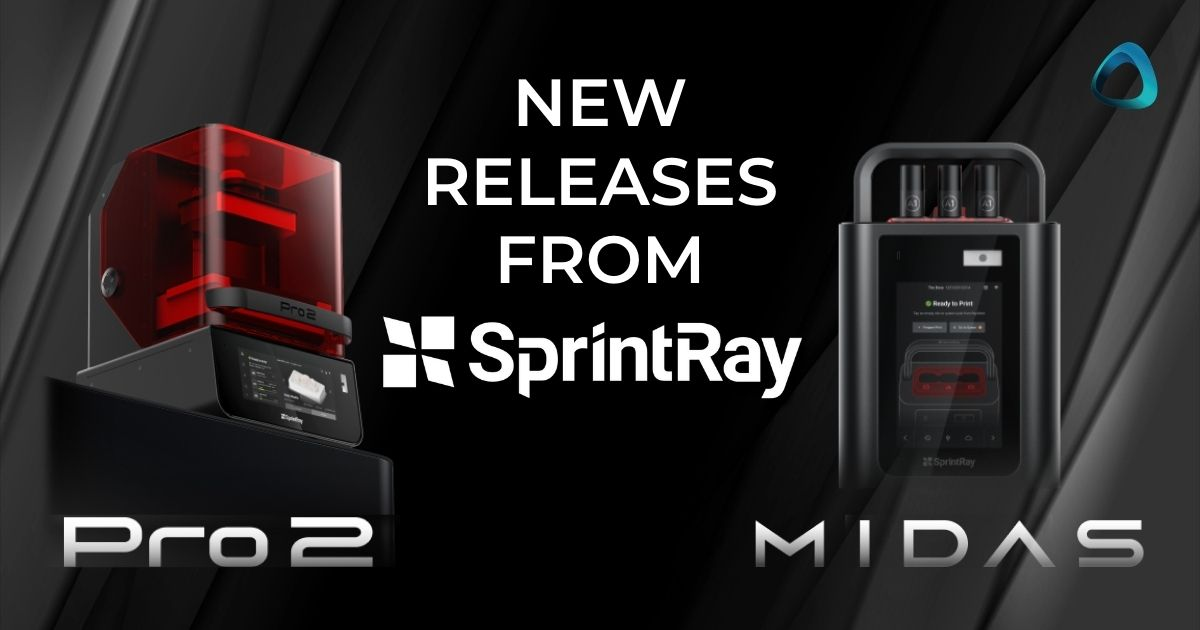SprintRay had an absolutely huge event over the April 20th weekend. They held their flagship conference - 3D Next 2024 in Miami.
The last 3D Next was 3 years ago and is always the launch pad for the company to announce all of their latest products. This year did not disappoint. SprintRay seems to be constantly innovating and releasing new 3D printing equipment and resins.
Just a few months ago at Chicago Midwinter, they released the new Nanocure and new resins for 3D printing dentures and night guards. It seems like that was just a teaser compared to this event.
I flew over to Miami to join them for their 3D Next conference and there they released two new 3D printers - the SprintRay Pro 2 and the SprintRay Midas, plus a bunch of new resins they teased.

As always, I have summarised all the details about these exciting new products for you below:
The New SprintRay Pro 2 3D Printer
This is the next evolution of the SprintRay line of 3D printers.
Prior to the release of the Pro 2 printer you had the 55S which had a smaller platform but better resolution and the 95S with a larger platform but less resolution. Well the now the SprintRay Pro 2 combines the best of both worlds. Big platform with high resolution.
There will be only one version of this printer, not two like the 55 and 95. So this is the latest SprintRay 3D printer to get.
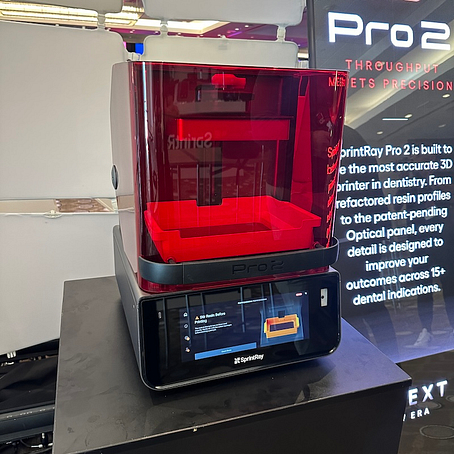
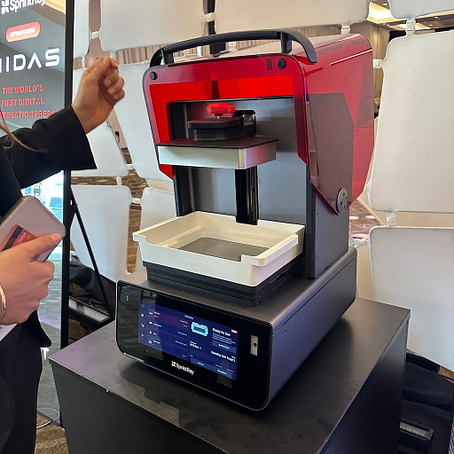

Here are all the details of the new SprintRay Pro 2:
SprintRay Pro 2 Build Platform
- Basically the same size as the SprintRay Pro 95 S
- Newly designed with a rubber handle
- Improved electronics to improve heating and reduce problems for the printer recognizing the build platform is inserted (fit pin on the platform improved).
- Arch Kit (Build Platform) will be released. Crown Platform is not going to be continued - arch kit does its job.
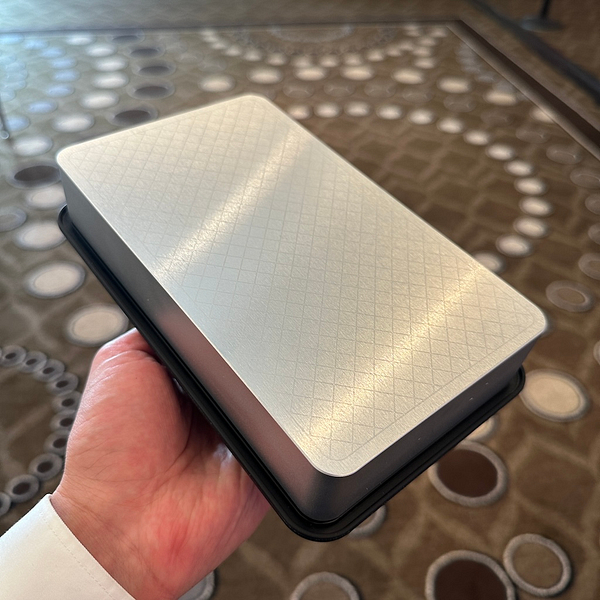

SprintRay Pro 2 Resin Trays
- New Rubberized Lid - tough to allow stacking easily. Also, it seals the trays much better from light and resin spillage.
- 1/2 litre of resin capacity, minimum level at 200mL
- Improved resin trays, no more glass at the bottom of the trays
- Has RFID so the printer can remembers what the tray is used for
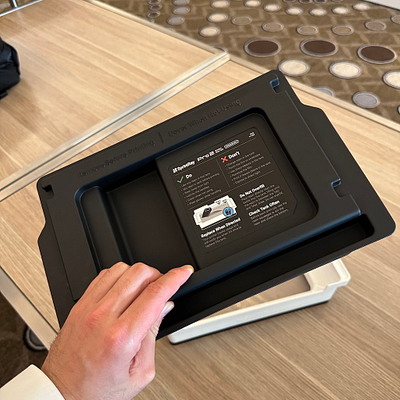
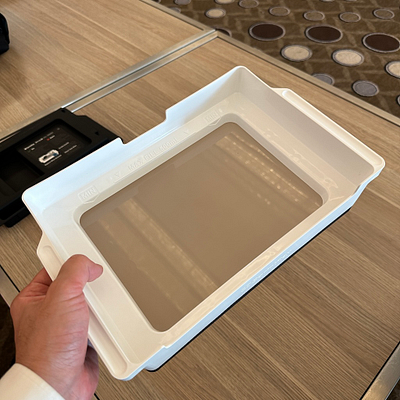
New 385 nm wavelength for the SprintRay Pro 2
- New light engine at a wavelength of 385 nm
- This was chosen as the wavelength instead of 405 which is most common in 3D printing.
- 405 is more forgiving for many print jobs. However typically has lots of bleeding of light through the layers especially with clear resins.
- 385 nm has more energy SprintRay says resulting in more polymerisation + more biocompatible = better mechanical properties. It also results in less distortion, less shrinkgage, less light scatter and the depth of cure is controlled better.
- 405 nm machines typically require longer cure times per layer.


SprintRay Pro 2 Optical Panel
- We have the 385nm LED in the printer and the optical panel is what converts that into a 35 micron pixel size across the entire panel (for reference, the Pro 55 S is 100 microns, so this is 4 times better).
- In other words the optical panel provides masking for 35 micron pixel density.
- Modular design - facilitating easy removal for cleaning but also upgrading if new technology arrises in the future
- Solves many of the concerns users had with the Pro S, such as better resolution, better accuracy and better cross arch fits.
- Optical Panel will last 1.5 - 2 years - $700 USD to replace



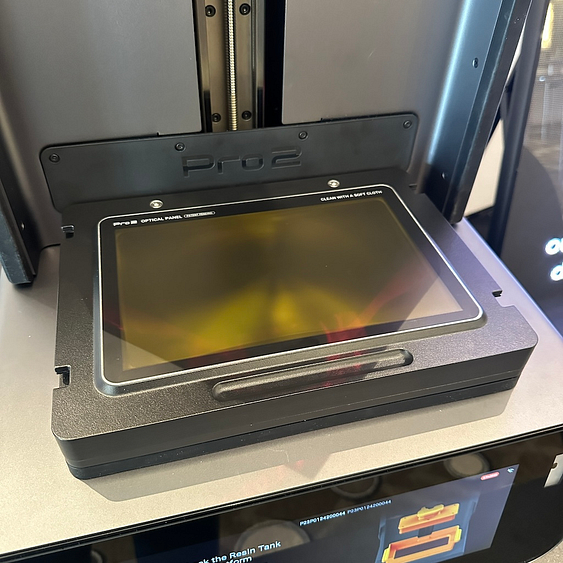
General Improvements on the New SprintRay Pro 2 3D Printer
- It has a new handle at the front. This is to prevent touching the lid and making it dirty.
- At the front there is a full glass 12 inch display, rather than having a small screen and plastic like previous models. Again, to facilitate cleaning and make it easier to keep the printer looking pristine.
- USB C at the front for uploading STLs directly if required. Of course, you can also send cases via the Raycloud.
- Barcode scanner - keeps track of everything like expirary dates.
- Once a resin is scanned it asigns that resin to ur resin tank so it advises you if you have the right tray inserted for the print job selected
- Is it not mandatory to scan SprintRay Resins but it IS mandatory for third party resins.
- Water cooled machine
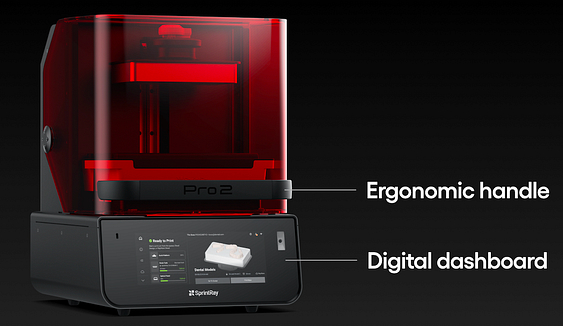
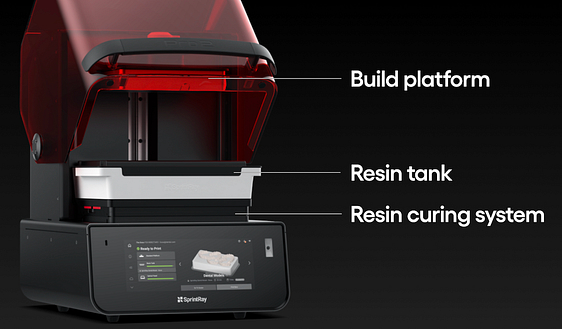
SprintRay Pro 2 New Computer and UI
- There is a powerful computer built into this printer running Android OS.
- New home-screen on the printer OS tells you status of all the parts - build platform, resin tray etc.
- SprintRay talked about soon releasing RayWare (CAD/CAM printer software) all within the printer.
- In other words, you take an intraoral scan of your prep for example, send it to the printer itself and using the large display and computer allows you to design and send to printer all on the printer.
- Rayware Cloud was talked about a lot, SprintRay will develop the AI workflow significantly.

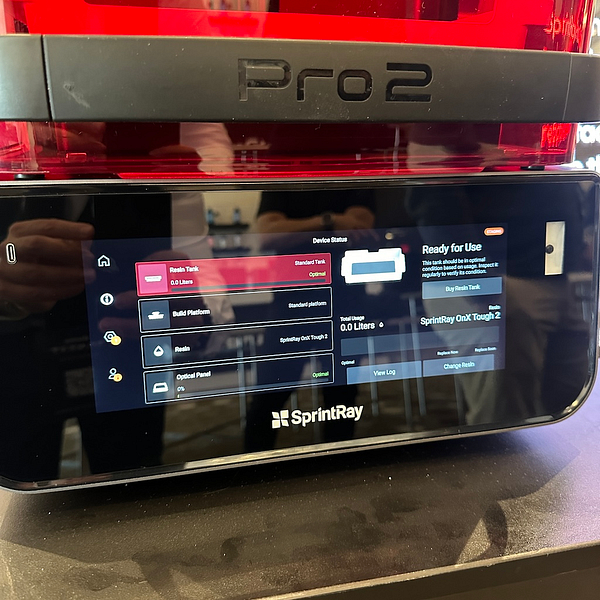
SprintRay Pro 2 Print Speeds
- Dental Models = 8 min at 170 micron layer thickness
- Hybrid Dentures (all on x) = 19 min at 170 micron layer thickness
- Surgical Guide = 17 min at 100 micron layer thickness
- Splints / Occlusal Guards = 15 min at 170 micron layer thickness
- Removable Dentures = 20 min for teeth and 40 min for bases at 100 micron layer thickness
- Restorations (crowns etc) = 12 min at 100 micron layer thickness
Side note - SprintRay says it is achieving +/- 23 microns accuracy with this printer.
The SprintRay Pro 2 is Priced at $9,995 USD
The SprintRay Midas 3D Printer
This was the mic-drop moment for SprintRay at the April 2024 event.
A totally different type of 3D printer and was the most exciting release of the event, by a large margin.
SprintRay says they have been working on this for two years and will completely change chair-side dentistry.
The SprintRay Midas is a small DLP 3D printer that uses cartridge type system to 3D print restorations within 8 minutes.
I saw it in action and ran a few prints. It is impressive on many fronts - how it works, the concept, the execution and the price.


The SprintRay Midas 3D printer is solving a problem and real limitation with all the dental 3D printers we are familiar with.
This issue is that almost every other 3D printer uses resin vats, and build platform tech the moves up and down.

The original patent. 3D printing tech has used this type of tech for decades.
The issue with this is that is a technological and hypothetical limit with the ceramic filler content that can be added to resins used with this tech. The more filler, the more viscosity, and you get to a point where the resin will not flow and thus cannot be used.
The Midas solves this by using a cartridge that uses Pascal's law - a piston like system that pumps the resin into the small build platform and therefore viscosity is no longer an issue.
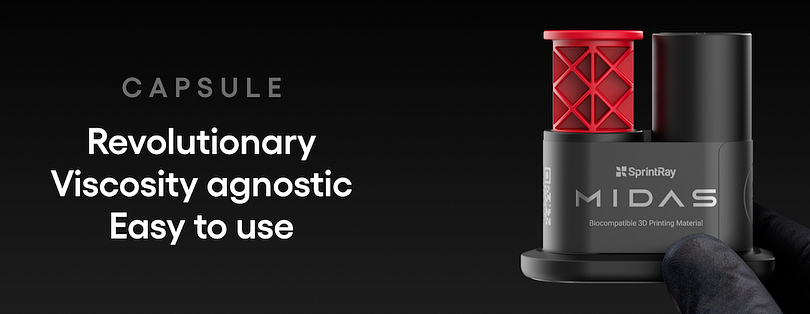

It is totally new tech and looks like a game changer moment for dentistry and has the potential to disrupt chair-side fabrication of restorations.
SprintRay has come out with new resins that have 70% ceramic filler already for the Midas 3D Printer. That is 20% more than their current ceramic crown resin. And this is just the beginning.
All details about the SprintRay Midas 3D Printer are below:

The Tech in the SprintRay Midas
- The Printer itself is called Midas or 'the Digital Press'.
- It is a DLP Printer (385nm) using what SprintRay is calling digital press stereolithography (DPS)
- A cartridge system is used. These are single-use.



The SprintRay Midas New Cartridge System
- Each cartridge has a build platform, resin and resin-tray combined in the cartridge. With one (red) plunger which the Midas 3D Printer will press on, which in turn, move the build platform (black looking plunger) up.
- As the red plunger is pushed down by the Midas the little build plate raises up at the same rate. The optical DLP unit shines light on the bottom where the capsule has a glass window. This cures the layers.
- This is totally different to any other dental 3D printer on the market currently. There is no more changing resin trays, adding resin etc. You just put a cartridge in and click start. Nespresso style.
- This technology means viscosity is no longer an issue. So in the future there is potential for printing ultra highly filled slurries and thick pastes.
- The SprintRay Midas Can print three cartridges simultaneously (different resin shades or types).
- Once again all cartridges are single use and cost around $25-35 USD at the moment.

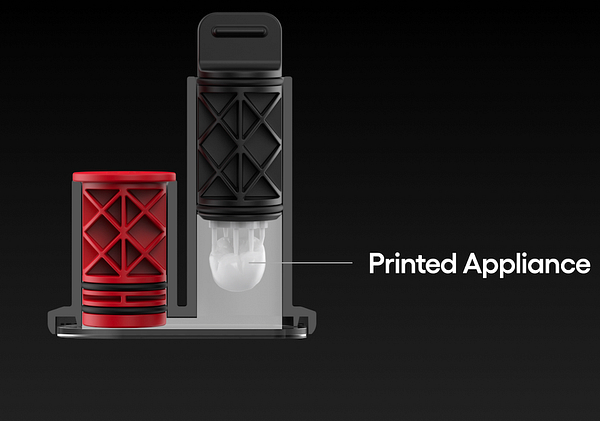
The SprintRay Midas 3D Printing Workflow
- To start the workflow, your CAD design will be sent to the SprintRay Midas for printing
- Interestingly SprintRay also released their new CAD solution AI Studio, which is a browser based AI CAD solution.
- A barcode scanner is used in the workflow to scan the cartridges in before printing

- The cartridges are placed after scanning into the SprintRay Midas.
- It has three areas for the cartridges at the moment via a template - designated square, triangle, circle. Reminds me of playstation
- Interestingly, these templates are removable so there is potential for different cartridge shapes, sizes and materials in the future.

- To start the 3D printing, the press arm will press down and then go up once finished, remove the cartridge and then you have your 3D printed restoration within the cartridge that can be pulled out.
- Standard post-processing after that - clean with IPA and cure.
- It takes 8-9 minutes to print a crown (nested on the side for ideal anatomy integrity - which is the slowest way to print as its the maximum vertical height)
- As mentioned midas resin has 70% ceramic filler with >200 MPa flexural strength to begin with
- Currently the SprintRay Midas is focussed on 3D printing restorations (for now).



SprintRay AI Studio
- SprintRay AI Studio is the new CAD software on the browser. Currently it designs restorations and splints. More will come
- Upload scans, marginate preps and proposal is given to you via AI for your restoration. Design tools exist to modify.
- With the SprintRay Midas they are giving you their AI Studio for free. AI assisted crowns onlays, inlays. Basically SprintRay want to reduce the barrier for 3D printing chairside - which is the design part.
- Otherwise if you want to use AI studio, it is a fee per export.


The SprintRay Midas is Priced at $9,995 USD
Wow. This could have been priced much higher.
Obviously SprintRay wants to make sure the cost barrier is as low as possible to really shake up chair-side dentistry.
SprintRay Midas Resin Cartridges are around $25-35 USD each (single use)


Although resin cartridges are single use, you can nest multiple restorations in a single print.
New SprintRay Resins Released at 3D Next 2024
While the news of the groundbreaking new 3D printing hardware was sinking in SprintRay wasn't finished. They still had even more resins to release in 2024. They really are becoming more of a resin materials company than just a 3D printing hardware manufacturer and that is a good thing because it is all about the material properties at the end of the day.
New SprintRay Retainer Resin
SprintRay released a new retainer resin for 3D printing orthodontic retainers. It felt like an essix retainer. Totally overshadowed by the huge Midas release but still nice seeing SprintRay innovate in materials.
Also they teased some new ultra high-translucent resins coming in the future.

New SprintRay 3D Printer Prices
With the release of the Pro 2, SprintRay also took the opportunity to lower the costs of their other 3D printers.
The prices are now as follows:
- SprintRay Pro 55 / 95 - no longer manufactured
- SprintRay Pro 55 S / 95 S - $6,700
- SprintRay Pro 2 - $9,995
- SprintRay Midas - $9,995
- SprintRay Nanocure - $3,299
- SprintRay ProWash S - $2,999
The new SprintRay Pro 2 and SprintRay Midas are being released in Q3 / Q4 2024
One Last Exciting Announcement from SprintRay...
The new hardware and resins were amazing but to me the most exciting announcement I saw at the event is that Ivoclar and SprintRay are in official partnership of some sort and at the very least collaborating on materials. Even the CEO of Ivoclar was at the event!
This is huge news and gives quite a lot of credibility to resin printing given that an amazing company like Ivoclar is willing to put their name behind it. I am really excited to see what these two companies can achieve together.
Thats a wrap! Any questions leave them below.

